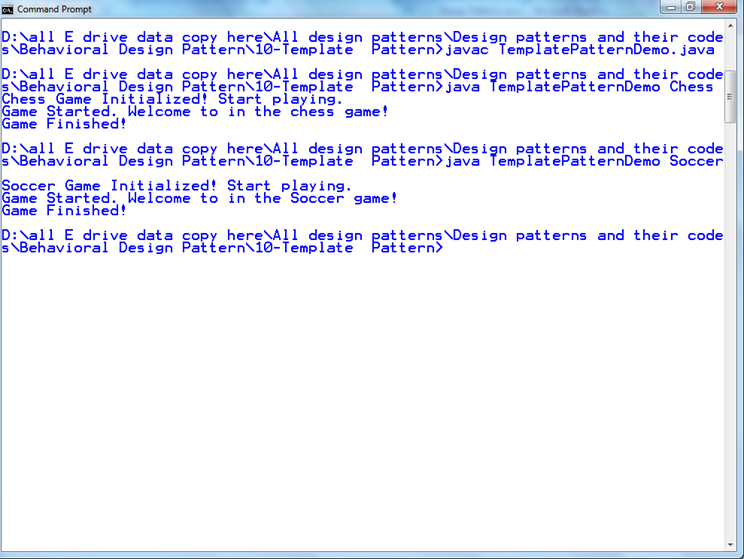Template Pattern
Template Pattern
A Template Pattern says that “just define the skeleton of a function in an operation, deferring some steps to its subclasses”.
Benefits:
- It is very common technique for reusing the code.This is only the main benefit of it.
Usage:
- It is used when the common behavior among sub-classes should be moved to a single common class by avoiding the duplication.
UML for Template Pattern:

Implementation of Template Pattern:
Step 1:
Create a Game abstract class.
//This is an abstract class.
public abstract class Game {
abstract void initialize();
abstract void start();
abstractvoid end();
publicfinalvoid play() {
// initialize the game
initialize();
// start game
start();
// end game
end();
}
}// End of the Game abstract class.
Step 2:
Create a Chess class that will extend Game abstract class for giving the definition to its method.
public class Chess extends Game {
@Override
void initialize() {
System.out.println(“Chess Game Initialized! Start playing.”);
}
@Override
void start() {
System.out.println(“Game Started. Welcome to in the chess game!”);
}
@Override
void end() {
System.out.println(“Game Finished!”);
}
}// End of the Chess class.
Step 3:
Create a Soccer class that will extend Game abstract class for giving the definition to its method.
public class Soccer extends Game {
@Override
void initialize() {
System.out.println(“Soccer Game Initialized! Start playing.”);
}
@Override
void start() {
System.out.println(“Game Started. Welcome to in the Soccer game!”);
}
@Override
void end() {
System.out.println(“Game Finished!”);
}
}// End of the Soccer class.
Step 4:
Create a TemplatePatternDemo class.
public class TemplatePatternDemo {
public static void main(String[] args)
throws InstantiationException, IllegalAccessException, ClassNotFoundException {
Class c = Class.forName(args[0]);
Game game = (Game) c.newInstance();
game.play();
}
}// End of the Soccer class.
Output:
